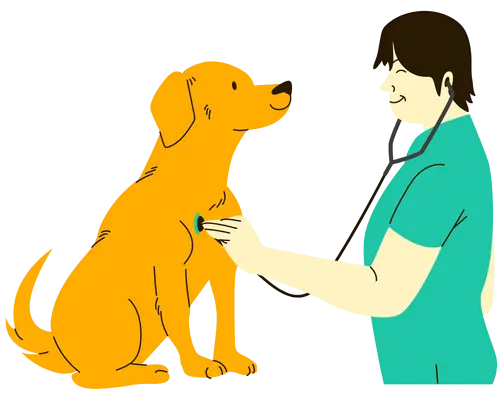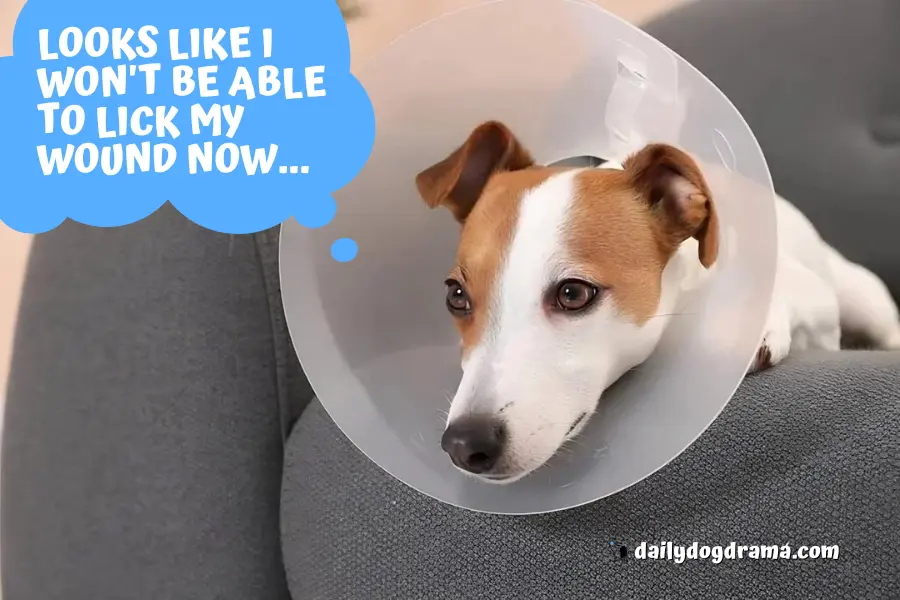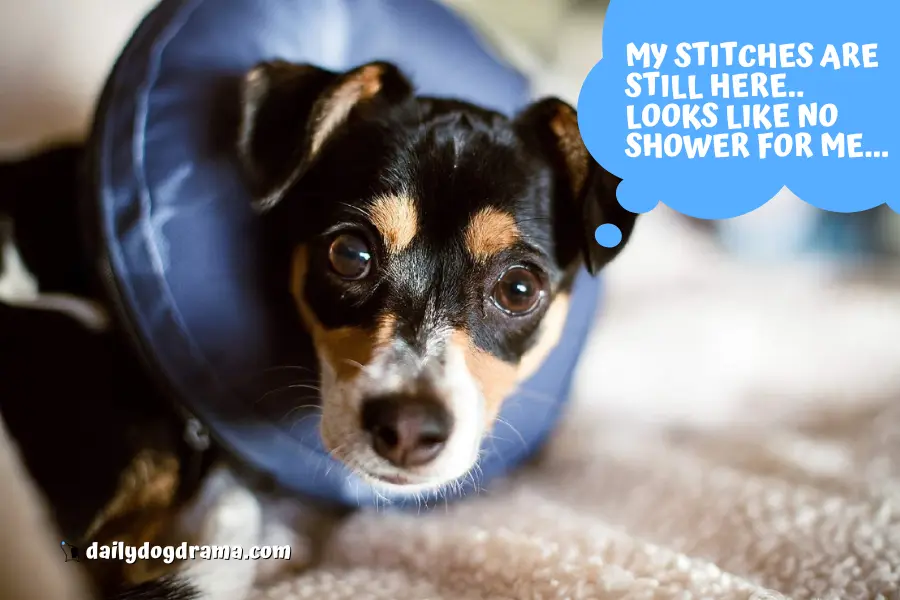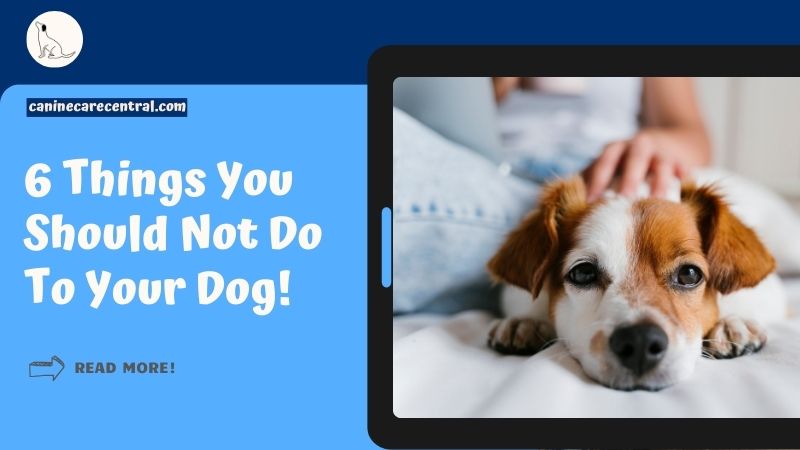Do you know what DOG ESSENTIALS you are missing out? Find out now!
Zack Keithy, our author, is a certified veterinarian technician (UC Blue Ash) for over 6 years (contact him here). The articles written here are based on his expertise and experience, combined with a review by our expert vet reviewers including Dr M. Tarantino. Learn more about us here.
Having our dogs well groomed is an important aspect of dog care, but what if it has an upcoming desexing operation to get neutered or spayed?
How should you arrange the grooming schedule?
Although keeping our furry pals clean and fresh is important for their well-being, if your pet has recently undergone neutering or spaying, you need to make sure that their surgical site is completely healed before bringing out that doggy shampoo or taking them to the groomer’s.
So, how soon after neutering can a dog be groomed?
Find out more in this post!
Medical Questions? Talk to a Veterinarian 24/7.
Connect one-on-one with a licensed vet who will answer your questions in minutes.
*Article may contain affiliate links to retailers like Amazon and Chewy. Learn more on our disclosure page.
- When Can I Bathe a Dog After Neutering or Spaying?
- Why Can't I Bathe My Dog Immediately After Spaying or Neutering?
- How Should I Bathe My Dog After Neutering or Spaying?
- Other Ways to Keep Your Dog Clean During the Recovery Period
- When Can I Bring My Dog to the Groomers After Neutering?
- How Long Does It Take a Dog to Recover from Being Spayed or Neutered?
- General Care Tips for a Dog After Neutering/Spaying
- Can I Bathe My Dog Before His Stitches Come Out?
- Is It Okay To Bathe My Puppy After Neutering?
- Can I Bathe My Dog A Week After Neutering?
- Should I Groom My Dog Before Neutering?
- How Do I Clean an Incision Area After My Dog's Surgery?
- Frequently Asked Questions (FAQs)
- In Conclusion: How Soon After Neutering Can a Dog Be Groomed?
When Can I Bathe a Dog After Neutering or Spaying?

Your pet just had surgery, so it’s really important to allow them ample time to heal before bathing them after spaying or neutering.
And the thing is, healing doesn’t happen overnight.
For this specific procedure, complete healing usually takes about two weeks, give or take a few days.
So, resist the temptation to splash them with water for now and let their bodies recover fully first.
Why Can’t I Bathe My Dog Immediately After Spaying or Neutering?
There are three main reasons why bathing too soon after spaying or neutering is a bad idea.
First, the surgical glue used to seal the incision may dissolve if it’s exposed to water too soon. If that happens, it could potentially cause the wound to open up.
Yikes! That’s bound to be painful and we definitely do not want that for our furry pals.
Second, exposing the surgical site to water increases the risk of infection and other complications. After surgery, the incision site needs time to heal properly and any moisture from a bath can interfere with that healing process.
And finally, let’s not forget that the incision is essentially a wound.
Have you ever tried putting shampoo on a raw wound? That’s gotta hurt.
Just like any other wound, getting water and shampoo on it can be uncomfortable and even painful for your furry friend.
We surely don’t want to put them through any unnecessary discomfort during their recovery process.
How Should I Bathe My Dog After Neutering or Spaying?
After your pet’s procedure, you need to follow your vet’s prescribed bathtime guidelines to help them heal properly.
We all want our furry pals to be squeaky clean and feel their best.
So, here are some handy tips to safely bathe your pet and keep them fresh during their recovery.
Wait until your dog’s surgical site has fully healed
Most vets recommend holding off on bathing for about 10 to 14 days, but healing time can vary.
Smaller dogs tend to heal faster than bigger ones, but I always recommend erring on the side of caution.
To find out if the wound is fully healed, you can check the incision site for certain signs.
Look for the absence of redness, swelling, or discharge, as these may indicate that the wound has healed.
The skin over the incision site should be fully closed without any gaps or openings, and your furry pal should not show any signs of discomfort or pain when the area is touched.
Touch gently!
Even if it has been 14 days since your dog’s surgery, you should still check for signs of irritation or infection.
If you notice anything unusual, or if your dog is persistently licking or scratching it, refrain from bathing your dog and notify your vet promptly.
Hey there, sorry to interrupt but I wanted to tell you about an online vet service I’ve been using for years.
An in-person visit with one is great, but it’s not always an option.
Now, thanks to technology, you can speak to one without leaving your home.

Got something to ask a vet?
Talk to one anytime, 24/7.
* Don’t use this service for emergencies.
Alternatively, a vet can come out to you instead (exclusive to our readers: use THEVETS15 for 15% off).
SCHEDULE AN APPOINTMENT HEREThank you. The rest of the article continues below.
Use lukewarm water and a mild dog shampoo
Hot water or harsh chemicals could potentially irritate the incision area, that’s why, when it’s finally time for your pet to take a bath again, use lukewarm water and gentle bathing products to avoid causing any discomfort.
Be gentle
Go easy during your dog’s bath time and be gentle when washing around the surgical site.
Scrubbing too hard or applying too much pressure could cause the wound to reopen.
Plus, being too rough can cause your pup to feel uncomfortable.
Use a clean towel to pat your dog dry
Be gentle even after the bath. No rubbing or vigorous towel-drying!
After rinsing off your pet, use a soft clean towel to dry them.
Opt for gentle patting motions over rubbing to avoid causing harm to the healed incision.
Consider using a cone or Elizabethan collar

As your furry friend’s surgical site starts to heal, it’s natural for it to get itchy.
If you’ve been injured or undergone surgery before, you too probably know how it feels, right?
And when dogs feel an itch, they tend to bite or scratch the incision site.
That’s a big problem!
Scratching, biting, or even licking can reopen the wound or disrupt the healing process.
To keep your pet from getting their paws or teeth on the incision, you should use a cone or an Elizabethan collar around their neck.
Yes, it’s uncomfortable but it’s better than having to deal with a reopened wound or an infection. Plus, it’s just temporary!
Other Ways to Keep Your Dog Clean During the Recovery Period
You still need to keep your pet clean and refreshed even during their recovery period.
It might seem a bit more challenging, but you just need to be creative and do it without harming the surgical site and exposing it to dirt and bacteria.
One solution I usually try is to use pet wipes.
These handy and portable wipes are a must-have for any fur parent during your pet’s recovery period.
Here’s one that I highly recommend:
If you’re looking to freshen up your pup’s coat without a full bath, dry shampoo can also come in handy.
There are commercial dry shampoos available for dogs that you can check out.
Alternatively, you can make your own by mixing cornstarch and baking soda.
Gently massage the powder through your pet’s coat using your hands or a soft towel to get rid of the doggy smell.
By regularly cleaning their sleeping area, removing any dirt or debris, and keeping their living space tidy, you can help promote a clean and healthy environment for their recovery!
When Can I Bring My Dog to the Groomers After Neutering?

Just like with bathing, it’s necessary to postpone your pet’s grooming appointments until their surgical wound is completely healed.
It’s best to hold off on trips to the groomer, even if it’s just for a simple nail clipping or a trim. While these activities may not involve getting wet, there’s still a risk that your pet’s wound could be accidentally bumped or irritated, especially if your pet flinches or moves suddenly during the grooming process.
To ensure the best possible recovery for your furry friend, it’s best to be cautious and wait until their wound is completely healed before resuming grooming activities.
How Long Does It Take a Dog to Recover from Being Spayed or Neutered?
Recovery time after spaying or neutering your furry buddy can vary depending on several factors. Generally, it takes around 10 to 14 days for the surgical incision to heal, but some dogs may take longer.
Larger or older pets may take a bit more time to recover compared to smaller or younger ones.
Plus, any complications during surgery or post-operative infections can also affect healing time.
If your pup is a little too adventurous during their recovery and starts licking or scratching at the surgical site, or if they decide to roll around in some dirt, it can slow down the healing process.
That’s why it’s super important to follow your vet’s post-operative care instructions.
General Care Tips for a Dog After Neutering/Spaying
Aside from holding off on baths and grooming activities until your vet gives the thumbs-up, there are some other general care tips to keep in mind during your dog’s recovery period.
First, make sure your pup has a clean and comfortable space for resting.
It’s important to provide them with a cozy spot where they can relax and heal without any unnecessary stress.
Next, prevent excessive activity.
Running around or jumping after spaying or neutering can strain the surgical site and hinder the healing process.
Your furry friend might be eager to play, but it’s best to limit physical activity to a minimum during this time.
It’s also crucial to avoid exposing your dog to potential sources of infection.
Keep them away from dirty or contaminated areas and minimize contact with other animals in the meantime to reduce the risk of complications.
A dog diaper after neutering might come in handy.
And last but not least, monitor the surgical site on your dog for any signs of redness, swelling, or discharge.
Can I Bathe My Dog Before His Stitches Come Out?

This is totally not advisable!
First off, bathing your pet before the stitches are removed can expose the wound to water and other substances that can cause infections or irritation.
Plus, soaking the skin can cause it to soften.
This increases the risk of the stitches coming loose or the wound reopening.
Either way, your pet’s recovery could be compromised, and you may end up with an even longer healing process.
So, what can you do instead?
Follow the care tips we discussed earlier: use pet-friendly wet wipes or dry shampoo to clean your dog’s fur, avoiding the wound area.
And if your pet is really stinky, you can always try a dog-friendly fragrance spray to keep them smelling fresh.
Is It Okay To Bathe My Puppy After Neutering?
The only time that it’s okay to bathe your puppy after neutering is when the surgical site is completely healed.
In general, this would be about 10 to 14 days after the procedure.
But even if the grace period is up, it’s crucial to make sure that the wound is fully healed before bathing your pet.
This may sound repetitive but it’s important to remember this important detail to ensure a smooth and speedy recovery for your furry pal.
Can I Bathe My Dog A Week After Neutering?
A week might be too soon to bathe your dog after neutering.
It’s important to wait until the surgical site is absolutely dry and healed.
Most vets advise that pets not be bathed for about two weeks.
Should I Groom My Dog Before Neutering?
Keeping your furry friend well-groomed is always a great idea, so go ahead and give your pup a nice bath and a good brushing beforehand.
This way, they’ll be looking and feeling their best before their big day at the vet.
As for shaving, it is ideal to let the professionals handle it.
The veterinary team will take care of trimming the hair around the surgical site before the procedure.
How Do I Clean an Incision Area After My Dog’s Surgery?
Did the vet explicitly instruct you to clean the incision area?
If not, then it’s best to leave the wound alone and let it heal on its own.
However, if you do need to clean the wound, follow these simple steps:
- Gently dab away any excess moisture around the incision with a clean and soft cloth.
- Use a bulb syringe to apply warm water slowly and gently.
- DO NOT SOAK THE STITCHES.
- After that, dab away excess moisture and check if the wound is clean.
- Repeat this process as needed.
Frequently Asked Questions (FAQs)
Can I bathe my dog immediately after neutering?
No, you should not. It’s best to wait until your dog’s surgical site has fully healed, which usually takes about 10 to 14 days, before bathing them. This is to give the wound ample time to close up and prevent any infection or irritation.
Can grooming cause any complications or infections for a neutered dog?
Yes, grooming and bathing can cause complications and infections for a neutered dog especially if not done properly. You need to keep the incision area dry and clean during the healing process, and moving your pet around can also put a strain on its healing body and incision area.
How can I tell if my dog is in pain or discomfort during grooming after neutering?
Keep an eye out for signs of pain or discomfort during grooming, such as whimpering, vocalizing, or trying to escape. If you notice any signs, stop immediately and consult your vet for further guidance on how to ensure your dog’s comfort during grooming after neutering.
In Conclusion: How Soon After Neutering Can a Dog Be Groomed?
So, there you have it – everything you need to know about grooming your dog after they’ve been neutered or spayed.
Remember to give your furry friend plenty of time to heal and consult with your veterinarian if you have any concerns.
With the right approach, grooming your dog after neutering can be stress-free and enjoyable for both you and your pup!
Don’t fur-get to check out our next posts too:
- How long after neutering a dog is testosterone gone
- Pros and cons of neutering a Bernese mountain dog
- Why does my dog keep sitting after neutering
You’ve made it to the end, but I hope it’s not the end of our journey. We want to hear your voice! Share your thoughts, problems, suggestions, or anything related to your dog in the comments section. And don’t forget to join our newsletter today too.




